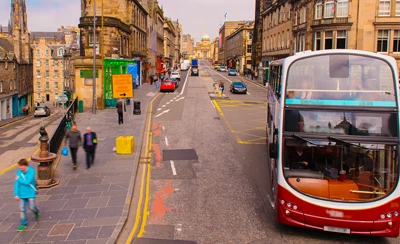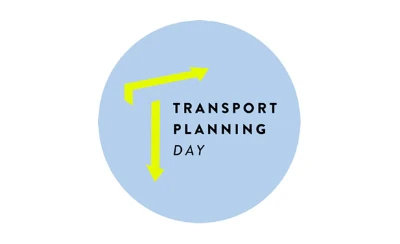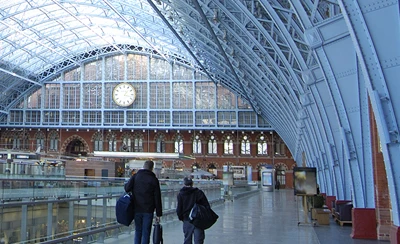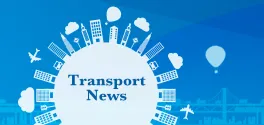Background
The Transport Planning Day Campaign 2021 centred around the theme of equality, diversity and inclusion (EDI). Transport planning can unlock people’s horizons to enable them to live their lives to the full, but not everyone has equal access to or ability to use transport, restricting the opportunities available to them. Despite the progress that has been made in recent years, there is still a long way to go when it comes to making our transport networks truly accessible.
Hate crime was identified by TPS as a key EDI issue the industry needs to address, given how it shapes and restricts people’s use of the transport network. This year’s parliamentary reception featured a panel discussion to explore the issue of hate crime on public transport in depth. The panel, drawn from a range of expert backgrounds, reflected on the impact of hate crime, and what transport planners, front-line workers and users of the network can do to combat it.
Speakers
- Mark Frost, CEO, Fern Consulting and Chair, Transport Planning Society (Chair)
- Tim Herbert, Policy Manager, Transport for London
- Jo Field, Founder & CEO, JFG Communications and President, Women in Transport
- Lisa Garett, Superintendent, British Transport Police
- Laura Putt, Principal Transport Planner, Transport for London and Vice-Chair, Transport Planning Society
Understanding hate crime
Panellists began by describing the impact that hate crime can have on individuals and wider communities. Given hate crime is based on who someone is, on features intertwined with their identity, being a victim of hate crime can be deeply traumatic. Panellists also pointed out that a hate crime incident can have an indirect impact on other individuals who share that victimised characteristic if it is publicly reported (be it through the news, social media or word of mouth). Whether someone experiences hate crime directly or indirectly, it can severely restrict an individual’s confidence using the transport network, or their willingness to access certain transport services at all.
Despite the impact hate crime can have on how people use the transport network, panellists described a widespread lack of understanding about hate crime among the general public. Panellists reported that, anecdotally, the public are not that familiar with the protected characteristics hate crime law covers, nor what kind of actions constitute a hate crime.
This lack of wider understanding can leave victims incredibly isolated. Indeed, among victims of hate crime, there is often a sense of normalisation, not necessarily associating it with a crime to be reported, but a feeling of ‘this is just what happens to me’. Panellists concurred that this is unacceptable and this sense of normalisation is what can contribute to the long-term view that transport is unsuitable for certain groups’ needs.
Throughout the discussion, panellists reflected on how engagement with key stakeholders – for instance community organisations – is vital to inform the work of the British Transport Police and transport professionals who are seeking to improve public understanding and tackle hate crime. This stakeholder engagement is key in order to understand why people might not report hate crime, how to reach people, what the impact of hate crime is, and to empower victims by giving them the opportunity to say what would help, and what they would like police and transport professionals to do.
Increasing public awareness
Improved public awareness of hate crime was cited as a fundamental starting point to combatting it widely, and ensuring the burden of reporting and challenging hate crime did not solely fall upon victims.
A Transport for London (TfL) campaign was launched in 2021 that was developed out of a process of stakeholder engagement with community organisations, as well as front-line TfL staff who had experienced or witnessed hate crimes. It was designed around the notion that if people are not unified in preventing hate crime then they are part of the issue. This campaign is intended to foster allyship among public transport users, so that those who are not directly victims of hate crime recognise their responsibility to act against it. The campaign was targeted at all users of the network, including transport workers as well as perpetrators of hate crime.
Panellists suggested that building awareness of hate crime is an initial step to building the public’s confidence to report it. It is known that hate crime is seriously underreported. Indeed, it was raised anecdotally that lots of users of the network do not realise that the British Transport Police reporting number – 61016 – is not for anything specific, but in fact serves a broad intelligence gathering function. In fact, this kind of ‘passive surveillance’ through reporting by members of the public is crucial for the British Transport Police and transport professionals to better understand where hate crime is taking place. This information can then be strategically used to combat hate crime, for instance by directing enforcement officers to areas where they know incidents take place. Communicating about hate crime means communicating the mechanisms of reporting that are in place and ensuring the public is confident in how to use those – both victims and witnesses.
As well as reporting hate crime after the event, panellists pointed to other ways in which allyship can support the victims of hate crime as it is happening. A common issue raised by victims of hate crime is that no other member of the public supported them while they were being attacked. There is an opportunity for other transport users to not only report, but to support. For someone who has been a victim of hate crime, panellists pointed out, knowing there are allies on a transport network with you will no doubt increase your confidence to travel and thus mitigate the impacts of hate crime on people’s mobility. The task is to cultivate this network of transport users who are allies against hate.
The importance of front-line staff
While awareness and understanding is key, panellists noted witnesses and victims of hate crime might not necessarily be confident reporting an incident for anyway, for any number of reasons. commonly related to a lack of confidence in the reporting process itself. Only through stakeholder engagement can transport professionals understand where this lack of confidence, beyond awareness, stems from.
From previous stakeholder engagement exercises, panellists said initial interactions with the police and frontline transport workers were important in determining how likely victims and witnesses would be to report future hate crimes. Often frontline workers only have one opportunity to address someone’s experience with due respect and understanding, and not to dismiss it. It is also key to ensure there is diversity among frontline staff that reflects the diversity of network users; a victim of hate crime may be more likely to feel comfortable reporting that crime to someone who understands where they are coming from and can possibly relate to their experience in some way.
Panellists also highlighted how the notion of allyship incorporates frontline workers alongside network users. If there is the sense that people managing transport spaces are considerate and understanding, that will increase people’s confidence to travel.
‘Designing out’ hate crime
Panellists pointed out that perpetrators of hate crime often do not come onto the transport network to commit a hate crime. Rather, incidents of hate crime often occur when would-be perpetrators perceive an issue with the network, be that busyness, a ticketing error, or delays to services. This irritation can then escalate and lead someone to commit a hate crime. From the perspective of transport planning, panellists concurred that if you ‘design out’ these triggers from the transport network you will likely reduce the incidence of hate crime.
Panellists also stressed the importance of ensuring that the diversity of society is reflected in the transport planning profession. As well as engagement with stakeholders outside the industry, it is crucial that the solutions are properly informed by those with diverse experiences and backgrounds within it. It is only through having these diverse perspectives inform planning and decision-making that we can create a network that works for everyone.
Panellists touched on the wider question of how far transport services themselves should be altered to mitigate hate crime, using the example of women-only train carriages as a starting point. They concurred that this is highly problematic, for the principle reason that you are making the victim change their behaviour rather than addressing the cause, and undermining the message that collective support and allyship can lead to everyone’s safe and comfortable use of transport services.
Despite the solutions posed, there was also acknowledgement among the panel that transport planning is only part of the puzzle. Tackling hate crime on the transport network, they concurred, also requires changes at a wider societal level, something that depends on inter-industry collaboration, cross-governmental coordination and education in schools.
Next steps
It is hoped this panel discussion will be the start of an ongoing conversation in the transport planning industry about hate crime on the transport network, and what can be done to overcome this barrier to creating a truly accessible transport system.
Some possible action areas include:
- Ensuring transport planners consider how planning decisions can fuel hate crime and where potential incidents might occur by incorporating an awareness of hate crime into EDI charters or training schemes.
- Encouraging senior transport planners to check their colleagues are aware of the latest guidelines and legislation around hate crime and its impacts.
- Conducting specific analysis of how transport planning decisions affect hate crime incidence through collaboration with British Transport Police.
- Establishing a closer relationship between the British Transport Police and transport planning organisations to ensure learnings are shared and a dialogue continues.
- Recognising this issue throughout the transport industry by establishing a pledge or charter for industry organisations.
- Developing an inter-industry coalition (for instance with education partners) to lobby for a cross-Government focus on tackling hate crime.
- Building closer collaborations between individual operators and local authorities on anti-hate crime campaigns.
- Considering how hate crime reporting can be extended to include walking and cycling, as well as in other public spaces.














